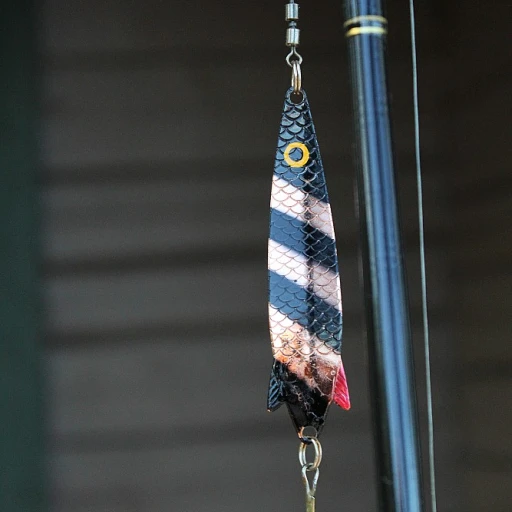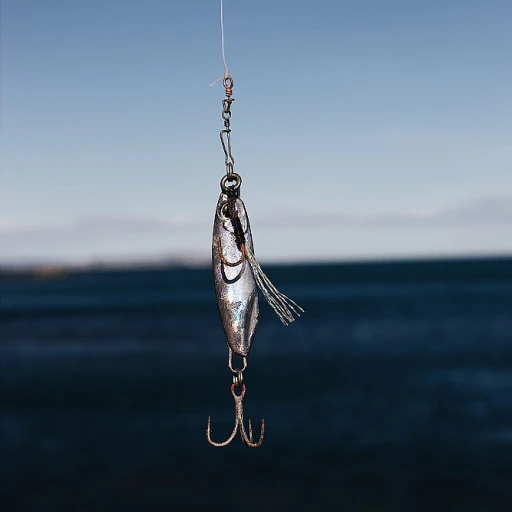
The record-breaking bluefin tuna
The monumental catch: Ken Fraser's legendary bluefin
One of the most unbelievable fishing feats happened back in 1979, and it still holds the record today. Ken Fraser, an avid angler from Nova Scotia, Canada, secured his place in history by landing the biggest bluefin tuna ever caught. This mammoth fish weighed an astounding 1,496 pounds and was caught off the coast of Nova Scotia. The fish was 12 feet long, and its weight was verified by the International Game Fish Association (IGFA), who keep meticulous records of such achievements.
A remarkable fishing adventure
Ken Fraser's catch not only broke all previous records but also set an almost unbeatable benchmark in the fishing community. He used a 130-pound test line and fought the giant bluefin for hours before finally reeling it in. The story of Fraser's struggle has become legendary among anglers, symbolizing the perseverance and skill it takes to land such a significant catch.
How the record was confirmed
The IGFA, which plays a critical role in maintaining world fishing records, had strict compliance checks in place even then. They verified the weight, measurements, and Fraser's equipment to ensure everything was up to their high standards. This association has been safeguarding the integrity of fishing records for years, making Fraser's achievement even more impressive.
The impact and inspiration
Fraser's astounding catch has inspired countless anglers to seek out their own record-breaking opportunities. Many have tried, but none have succeeded in surpassing Fraser's massive bluefin. This record has stood the test of time, solidifying Ken Fraser's status as a legendary figure in the world of fishing.
The ripple effect
Following Fraser's achievement, more anglers have flocked to Nova Scotia, hoping to replicate his success. Not only has it shone a spotlight on the region, but it has also increased the popularity of bluefin tuna fishing globally. To this day, Fraser's catch remains a benchmark of what is possible in the angling community.

- + High Max Drag: Up to 55LBs for big game fishing
- + Waterproof: IPX6 rating provides protection against water
- + Corrosion-Resistant: Durable bearing system for saltwater use
- + Perfect Gift: Ideal for saltwater fishing enthusiasts
Understanding the bluefin tuna species
Delving into the gentle giants: the fascinating world of bluefin tuna
An exploration of bluefin tuna species
Bluefin tuna, among the most magnificent creatures of the open ocean, span across various species. These tunas are renowned for their size, speed, and the thrilling fishing escapades they inspire. The primary species include the Atlantic bluefin (Thunnus thynnus), Pacific bluefin (Thunnus orientalis), and Southern bluefin (Thunnus maccoyii). Each species thrives in different parts of the vast oceans, with unique behaviors and migratory patterns. The Atlantic bluefin tuna is perhaps the most famous, often found in the western and eastern parts of the Atlantic Ocean and the Mediterranean Sea. These bluefins can grow exceptionally large, with records hitting jaw-dropping weights. Known scientifically as Thunnus thynnus, these majestic fish are a prized catch for anglers worldwide. Pacific bluefin tuna roam the waters of the North Pacific, from Japan to Mexico. While they may not be as hefty as their Atlantic cousins, they still hold a respectable record, with some individuals reaching impressive sizes. The Pacific bluefin tuna's scientific name, Thunnus orientalis, reflects their vast roaming territory. Then there’s the Southern bluefin tuna, primarily found in the colder waters of the Southern Hemisphere, near Australia and New Zealand. Thunnus maccoyii, as they're scientifically known, are somewhat smaller but no less significant in the fishing community. These bluefin tuna species are top predators in their ecosystems, crucial for maintaining a balanced marine environment. Their presence signifies healthy oceanic conditions, as they're both indicators and regulators of the ecological balance.Tracking the biggest bluefin tuna ever recorded
The fascination with bluefin tuna isn't just about the catch but also about records, some of which have stood the test of time. The largest bluefin tuna ever caught weighed a staggering 1,496 pounds. Caught by Ken Fraser off the coast of Nova Scotia, Canada, this behemoth of the seas cemented its place in the annals of fishing history. The biggest fish in the world caught: record-breaking giants of the deep article provides a deeper dive into such epic catches. Bluefins are not just any fish; they're the gladiators of the ocean. Their sheer power and speed make them formidable opponents for anglers. The International Game Fish Association (IGFA) plays a pivotal role in keeping these records, ensuring that each claim meets rigorous criteria and standards. The thrill of catching such a massive bluefin tuna isn't solely about the size. It's about the legacy, the story, and the respect for these amazing creatures. George Gill, renowned for his contributions to bluefin knowledge, once said, "Every bluefin is a testament to the strength and resilience of the ocean." His words resonate deeply with every fishing enthusiast. In understanding bluefin tuna, we learn more than just their physical attributes. We delve into their journey, their role in the marine ecosystem, and the challenges they face. This knowledge fosters a greater appreciation and drives efforts to protect these gentle ocean giants.The significance of the Atlantic bluefin tuna
The rich heritage and significance of bluefin tuna
Atlantic bluefin tuna have a storied history, marking their territory in the annals of both fishing and culinary traditions. They are not just any fish - they are titans of the sea, playing a crucial role in the marine ecosystem and the economy.
Historically, the biggest bluefin tuna have been revered and sought-after, creating legends of the waters. Their very presence stirs excitement among anglers, chefs, and conservationists worldwide. Bluefins are found in the Atlantic Ocean, stretching from the Gulf of Mexico to the Canadian Maritimes, and some even say to the Mediterranean.
With their sleek bodies and incredible power, these fish are built for speed and endurance, capable of crossing entire ocean basins. The Atlantic bluefin's sheer size and strength make it a symbol of magnificence among marine species. They're renowned for their stamina and are capable of reaching lengths of up to 13 feet and weighing over 1,000 pounds.
A delicacy and a treasure
Bluefin tuna are not just substantial in size; they are also a culinary delicacy, especially in places like Japan, where sushi and sashimi lovers prize their rich, fatty flesh. A single specimen can fetch an astounding price at auction. The legendary Tokyo Tsukiji fish market saw a Pacific bluefin tuna sell for over $3 million in January 2019, highlighting the fish's economic significance.
Their high market value has incentivized both commercial and recreational fishing. Coastal communities, especially in places like Nova Scotia and Japan, rely heavily on bluefin tuna fishing as an economic pillar, providing jobs and supporting local economies. However, this high demand poses threats to the species, making sustainable fishing practices and regulatory measures critical.
Conservation endeavors
The plight of the bluefin tuna's declining populations has not gone unnoticed. According to the IUCN Red List, the Atlantic bluefin tuna (Thunnus thynnus) is classified as endangered, highlighting the urgent need for conservation efforts. Overfishing and illicit catches have critically impacted their numbers, prompting organizations and governments to enforce stricter regulations and promote sustainable fishing.
Groups like the International Commission for the Conservation of Atlantic Tunas (ICCAT) have been at the forefront of efforts to protect this majestic species. Measures like catch quotas, closed fishing seasons, and other protective policies are designed to balance the bluefin's economic importance with the necessity of preserving their populations for future generations.
Understanding the allure and importance of the bluefin tuna helps explain why they are such revered creatures. Their significance spans from the waters they inhabit to high-end culinary tables and global economic markets. Efforts to sustainably manage and protect these awe-inspiring fish are crucial to ensuring that they continue to be a part of our oceans and our lives.
The role of the IGFA in record-keeping
Igfa's meticulous record-keeping and the hunt for validation
It's no secret that catching the biggest bluefin tuna is a goal for many anglers, but officially registering such a catch involves a meticulous process that only an institution like the International Game Fish Association (IGFA) can manage. The IGFA, established in 1939, is renowned for maintaining and verifying angling records. This organization has standardized rules and regulations to ensure that every record is accurate and reliable.
George Gill, one of the prominent figures in recreational fishing, emphasized, “The IGFA’s stringent verification process ensures that only legitimate records make it to the books. This eliminates any shadow of doubt.” Their rigorous process involves submitting photographic evidence, sworn affidavits, and equipment inspections. In cases where the catch is of exceptional size, like the massive bluefin caught by Ken Fraser, an entire committee may be called in to validate the data.
Ken fraser and his legendary catch
Ken Fraser, a name now etched in the annals of big game fishing, caught the largest recorded bluefin tuna off Nova Scotia in 1979. His 1,496-pound monster not only broke records but also set an astonishing benchmark for future generations. The process to validate this catch was extensive, involving multiple verifications and on-site inspections by IGFA officials.
When records collide: the giant bluefin tuna debate
The story of giant bluefin isn’t without its controversies. There have been several claims of tuna surpassing 1,600 pounds, but these catches often lack adequate verification. In some instances, anglers have cited discrepancies in weighing techniques and scales not meeting IGFA standards. The debate over these oversized fish highlights the critical nature of IGFA's role and strict criteria.The IGFA’s database also includes records of other large bluefin specimens – catches like a 1,200-pounder off the coast of Japan – showing the global reach and appeal of this sought-after fish.
Why proper record-keeping matters
With the ocean shark species like the bluefin facing significant pressure, accurate record-keeping is even more vital. Conservation efforts rely heavily on this data to regulate quotas and ensure sustainable fishing practices. The IGFA collaborates with conservationists and government bodies to monitor fish populations and advocate for responsible angling.
The IGFA’s role in keeping the integrity of fishing records intact cannot be overstated. They work closely with anglers and agencies worldwide, ensuring that every giant bluefin tuna caught and reported contributes to a larger understanding of these magnificent creatures. The next time you hear about a record-breaking bluefin, remember the exhaustive process that verifies its place in the history books.
Famous bluefin tuna catches and the anglers behind them
Celebrated anglers and their legendary catches
Bluefin tuna fishing isn’t just about the fish – it’s also about the anglers who can reel in these massive creatures. The tale of the biggest bluefin tuna caught is legendary in itself. No conversation on this subject would be complete without mentioning Ken Fraser. This Canadian angler from Nova Scotia holds the record for the largest bluefin tuna ever caught, weighing in at an astounding 1,496 pounds. Caught off the coast of Nova Scotia in 1979, Fraser’s catch remains a monumental achievement in the world of recreational fishing.
Take for instance George Gill, whose exemplary skills saw him setting multiple IGFA records. His fascination with giant bluefin tuna led him to remarkable fishing expeditions, especially in the Gulf of Mexico and the waters off the coast of Massachusetts. Gill’s perseverance and dedication showcase what it takes to be a top-notch bluefin tuna angler.
In Japan, bluefin tuna fishing is almost a cultural phenomenon. Anglers flock to the Pacific waters, particularly around the waters near Tokyo, in hopes of landing a record bluefin. In 2011, a huge pacific bluefin tuna weighing over 530 pounds was caught, catching the eyes of fishing enthusiasts worldwide.
The hunt for the monstrous bluefins
Fishing for these giants isn't just about brute strength. It's also about the finesse and techniques applied. Anglers like Anne Nuffer Hinze have shown tremendous skill with specialized gear and fishing tackle, often tailored to withstand the immense power of bluefins. The correct tackle, reels spooled properly, sturdy fishing rods, and the right baits – all blend seamlessly to hook these ocean titans.
In the Atlantic, especially near Prince Edward Island, and across the Mediterranean, numerous stories abound of anglers spending long, arduous hours on their boats, facing the elements and the raw power of the bluefin tuna. Using advanced techniques and knowledge, these anglers make an art out of the struggle between man and fish.
Personal tales of triumph and occasional heartbreak
Not all stories end in victory. There are countless tales of anglers whose reels were spooled, battles lost, and fish that got away. These stories add a human touch to the grandeur of bluefin tuna fishing – an endeavor where the waters of the Atlantic and Pacific hold both dreams and despair.
Ken Fraser’s recount of his epic battle with the 1,496-pound bluefin is a testament to the mental and physical strength required. His story of struggling for hours highlights the sheer determination needed to secure such a catch. Similarly, enthusiasts in New Zealand and Australia often share tales of their thrilling encounters with thunnus thynnus and the challenges faced in the Pacific.
In essence, the sport intertwines personal stories and history, with every angler dreaming of their own place in the annals of fishing folklore. Each record-setting catch not only sets a new standard but also weaves a new chapter in the ongoing saga of bluefin tuna fishing.
The equipment and techniques used in bluefin tuna fishing
Types of Equipment for Taming the Mighty Bluefin
Anglers aiming to reel in the giant bluefin tuna need not only skill but also top-of-the-line gear to withstand the strain of their enormous catches. The fish often weighing over 1,000 pounds, like Ken Fraser's record-breaking 1,496-pound monster caught off Nova Scotia, calls for some serious hardware.
One crucial piece of equipment is the fishing rod. Renowned brands like Penn International and Shimano have designed heavy-duty rods specifically for deep-sea fishing. These rods, built with reinforced graphite and aluminum, provide the necessary strength and flexibility to handle strong yank from a giant bluefin. George Gill, a celebrated angler, claims that his Penn Tuna Stick was a game-changer in his numerous Atlantic bluefin expeditions.
The Role of the Fishing Reel
The fishing reel plays an equally crucial role. A high-capacity, robust reel is essential to handle the massive pull and long battles these titans of the ocean often demand. Reels like Shimano Tiagra and Daiwa Saltiga are popular among professional anglers for their reliability and smooth drag systems, allowing for extended battles without risking equipment failure. Anne Nuffer Hinze, another expert in tuna fishing, emphasizes the need for a reel that can handle a line capacity of at least 80-130 pounds to prevent being spooled by the powerful fish.
Lines and Leaders
The line and leader cannot be overlooked. Braided lines with a high pound test rating are preferred for their strength and low stretch, enhancing sensitivity during the fight. Monofilament leaders around 300-400 pounds are often used to provide a cushion for the aggressive strikes and the sharp teeth of the bluefin. Anglers often select brands like PowerPro and Berkley Big Game for these specifications. The International Game Fish Association (IGFA) mandates compliance with their strict guidelines on tackle and line classifications for any world record attempts.
Modern Techniques and Electronics
Beyond the classical pole-and-line method, modern advancements have also changed the bluefin tuna fishing game. Advanced fish-finding electronics, such as high-resolution sonar and GPS systems, help anglers locate and track bluefins in the vast Atlantic or Pacific Oceans. Expert fishermen swear by the technology available from companies like Garmin and Furuno for enhancing their catch rates.
Additionally, techniques like chumming, which involves dispersing bait to attract tuna, are widespread. Some even deploy kites to suspend baits and mimic flying fish, a favorite prey for bluefins. These methods have been refined over years of practice and innovation, with each angler adding their unique tweaks based on experience.
Case Study: Prince Edward Island
Prince Edward Island is a famed hotspot for giant bluefin tuna fishing, thanks to its rich marine environment. Anglers from across the globe visit these waters with boats loaded with state-of-the-art equipment, hoping to emulate the success of record-holders. Equipped with heavy-duty rods, massive reels spooled with high-tensile lines, and guided by precise marine electronics, they chase these oceanic behemoths in often arduous battles that test both human and machine.
Final Words from the Pros
As the seasoned angler and bluefin enthusiast, Ken Fraser highlights, “The thrill of wrestling with a bluefin is unparalleled, but it’s the right equipment that makes such an feat possible.” From rods to reels and the latest electronics, every piece plays an crucial part in the dramatic quest to bring these magnificent creatures to the boat. Happy fishing!
Conservation efforts and the IUCN Red List
The ongoing fight for bluefin tuna conservation
Efforts to conserve bluefin tuna, particularly the Atlantic bluefin tuna (Thunnus thynnus), have become crucial, evidenced by its listing on the IUCN Red List. The population of this iconic species has seen significant declines due to overfishing, with estimates suggesting a reduction of over 50% in certain regions over the past few decades (ICCAT, 2022).
Regulatory measures: Various international bodies, including the International Commission for the Conservation of Atlantic Tunas (ICCAT), have implemented stringent measures to regulate bluefin tuna fishing. These measures include setting Total Allowable Catches (TACs) and introducing fishing quotas. For instance, the TAC for Atlantic bluefin was set to 36,000 tons in 2022 (ICCAT report, 2022).
Recovery successes: There have been positive outcomes from such efforts. A study by the National Oceanic and Atmospheric Administration (NOAA) showed signs of population recovery in the western Atlantic stock as catch rates improved, indicating a stable growth in the population (NOAA, 2021).
Individual actions contributing to conservation
Anglers and commercial fishers alike play a vital role in these conservation efforts. Many adhere to catch-and-release practices, ensuring the survival of non-target species and juvenile tuna. Moreover, using circle hooks instead of traditional J hooks has proven effective, reducing bycatch mortality rates (NOAA Fisheries, 2020).
Ken Fraser, who caught the largest bluefin tuna, once remarked, "We must fish wisely today, so future generations can enjoy the thrill tomorrow" (Fraser, interview with Salt Water Sportsman, 2019). This ethos reflects a growing awareness and commitment among the fishing community to sustainable practices.
Technology and innovation in tracing tuna
Technology also plays a pivotal role. Electronic tagging programs, like those by the Large Pelagics Research Center (LPRC), have provided valuable data on migration patterns and breeding grounds. This data aids policymakers in enacting more precise conservation measures (LPRC, 2021).
Additionally, the use of satellite monitoring helps ensure compliance with fishing regulations. Vessels are required to use Vessel Monitoring Systems (VMS) to track their movements, reducing instances of illegal, unreported, and unregulated (IUU) fishing (European Fisheries Control Agency, 2022).
For further detailed information on the significant mark made by the largest bluefin tuna ever caught, visit our world record bluefin tuna link here!
The economic impact of bluefin tuna fishing
Economic implications driven by bluefin tuna fishing
Bluefin tuna fishing isn't just for rewards; it fuels economies. Giant bluefin tuna are worth their pound for their culinary appeal, particularly in sushi markets like Japan. A bluefin tuna caught in 2019 weighed 612 pounds and sold for a staggering $3 million at the famous Tokyo Tsukiji Market. The influence is such that Ken Fraser's record bluefin tuna, weighing 1,496 pounds caught off Nova Scotia, drove unprecedented market interest.
Recreational fishing also contributes significantly, driving tourism in areas like Prince Edward Island and Massachusetts, where the Atlantic bluefin spawns, and Florida’s Gulf of Mexico. Anglers invest heavily in boats, tackle, and gear, boosting local economies. The North Atlantic bluefin fisheries generated $73 million in 2017, with substantial impacts from sport fishing.
Conservation’s role in sustaining the bluefin economy
On the flip side, the bluefin’s endangered status has demanded conservation measures. The International Union for the Conservation of Nature (IUCN) lists the species on the Red List, compelling action. From aggressive targeting in the 1960s to immaculate record-keeping by IGFA, the history of bluefin tuna fishing is a tale of caution. Conservationists, scientists like Anne Nuffer Hinze, and regulations now strive for balance, curbing overfishing while letting the economy thrive.
Integrating these efforts will ensure future generations relish the thrill of chasing these ocean giants and support the regions that have become synonymous with record bluefin tuna catches. It’s a delicate dance between demand in places such as Japan and preserving the species, keeping the water rich and the oceans open for adventure.

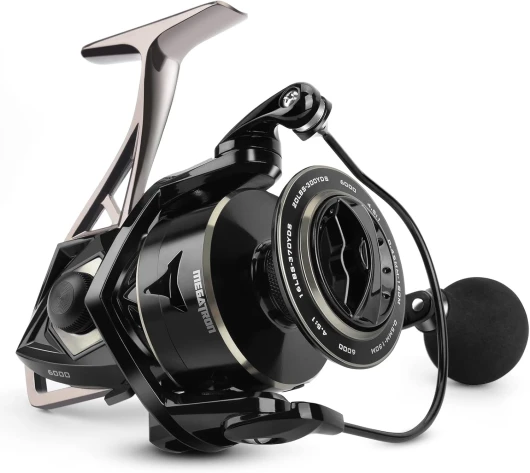

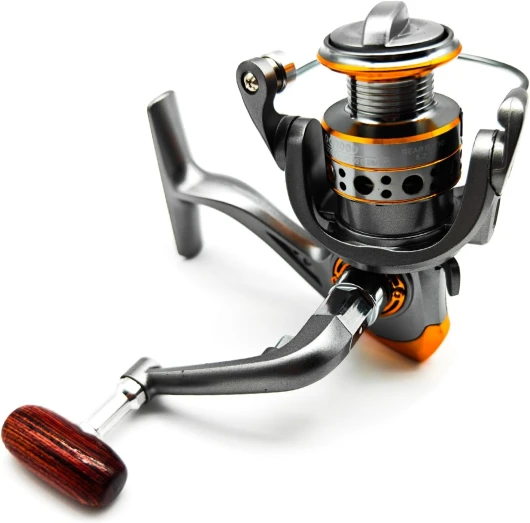
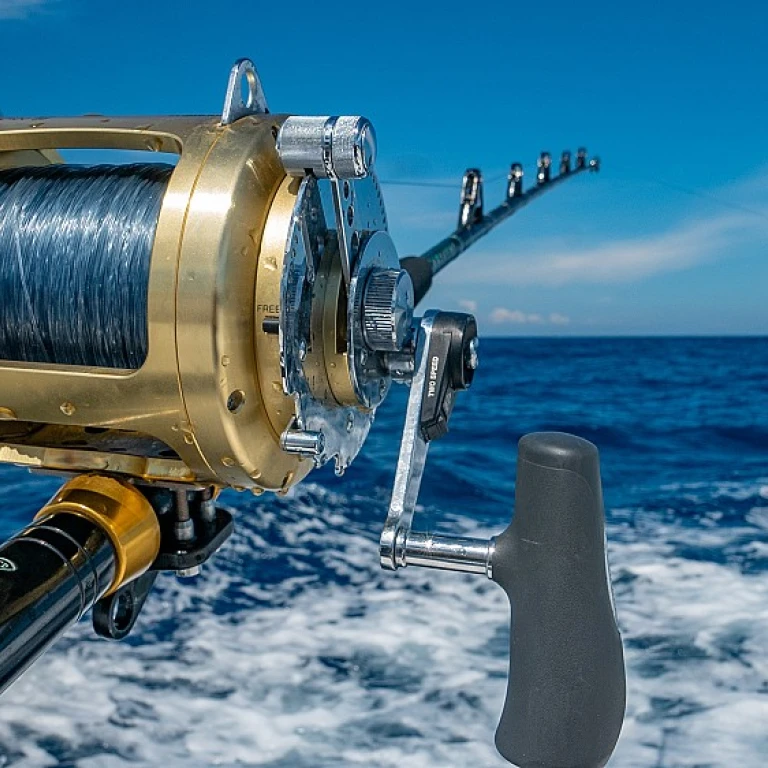


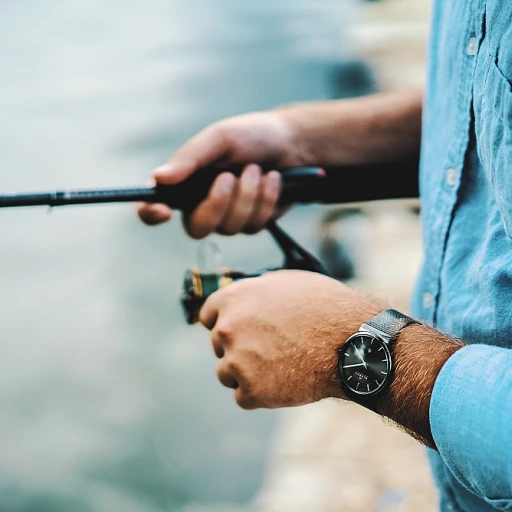
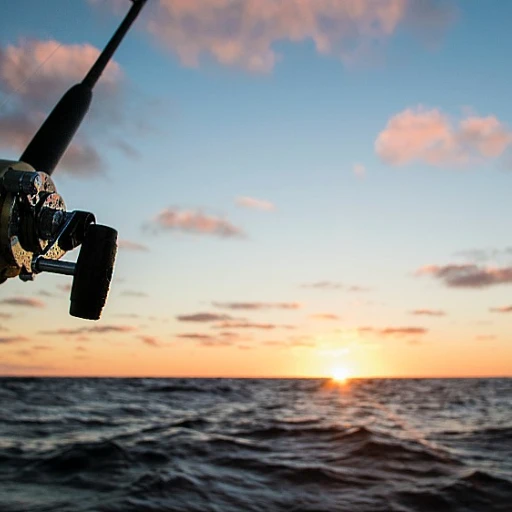

-large-teaser.webp)

